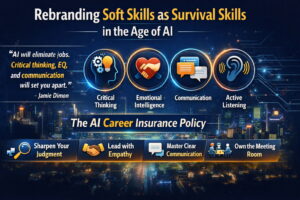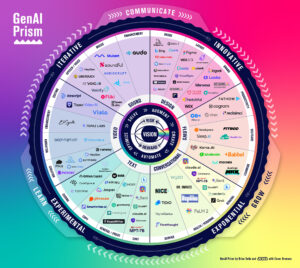by Michael Brito

Getty Images
Wikipedia tells us that active listening is an intent to “listen for meaning”. Others suggest that active listening should “focus on who you are listening to, whether in a group or one-on-one, in order to understand what he or she is saying.”
These are excellent definitions. But as it relates to customer interactions on the social web, active listening is only one half of the equation.
Take for example, this brief illustration. A man gets home from work and starts engaging in a meaningful discussion with his wife about his bad habits (or rather, she engages with him). She insists that she is tired of picking up his dirty socks from the living room floor; and asks him to be more mindful of picking up after himself. He actively listens to her, agrees; but forgets to put his dirty socks in the hamper that evening.
What happens next might sound familiar – lather, rinse, repeat; or in other words, active listening with no action for the simplest of requests. The end result is an unhealthy relationship in some cases.
A lot of organizations today do an excellent job at listening to their customers online. In fact, some very well respected companies and technologies have emerged that address this new trend of listening on the social web (BuzzGain, Radian 6, Visible Technologies). Many of these tools have great reporting functionality; and some even help create feedback workflows for brands. But the work doesn’t stop there.
The question for brand marketers (and I am talking to myself as well) is … “how long can we expect our customers to continue talking to us if all we do is just listen?”
Given the example above, there is much more than just listening. A recent report by Charlene Li and Wetpiant might shed some light on this very subject.
The report looked at several brands and measured their breadth and depth of engagement with consumers on the social web. Here are the top ten brands with their scores:
1. Starbucks (127)
2. Dell (123)
3. eBay (115)
4. Google (105)
5. Microsoft (103)
6. Thomson Reuters (101)
7. Nike (100)
8. Amazon (88)
9. SAP (86)
10. Tie – Yahoo!/Intel (85)
What makes this report even more interesting is the correlation of engagement and financial performance. The analysis groups each brand with the greatest depth and breadth into a category titled “Social Media Mavens”. On average, those who were classified as “Social Media Mavens” grew 18% in revenue over the last 12 months. On the other hand, the companies who were least engaged with consumers on the social web unfortunately suffered an average of 6% decline in revenue. Here is the actual report (PDF) for reference.
A closer examination of the top two companies’ social initiatives leads to an intuitive revelation.
Both Starbucks (ranked #1) and Dell (ranked #2) do not only listen to their consumers, but they also act. Take for example the My Starbucks Idea initiative. The site allows for just about anyone who registers to make suggestions directly to Starbucks. One that just caught my attention was a suggestion to “please bring back the mapleoat scone…it is one of life’s little pleasures.” Great suggestion; I registered and voted. I love those maple scones.
What’s even more important is that Starbucks is doing more than just listening and building a fancy site that allows people to vote/comment/suggest. They are actually implementing many of the suggestions that Starbucks customers are concerned about; and ensuring that everyone is aware.
Dell was the first to do this and is the recognized leader for listening to their customers. The IdeaStorm web initiative launched a few years ago and they have the same model as Starbucks. Their top suggestion from the community is to “Standardize Power Cables for Laptops”.
Again, they do more than just listening. They actually pick up their dirty socks and put them into the hamper every night.
For example, Dell just recently announced its FastTrack option for quick shipping to get pre-configured systems directly to customers as quickly as possible. This program was generated from the multitude of ideas/suggestions straight from IdeaStorm, to include:
• Offer Nextday Delivery
• Delivery Time – Please Reduce.
• Maintain a minimal stock for immediate delivery
What I am suggesting is that organizations that listen to their customers online are doing the right thing. There is nothing wrong with investing in software and human capital that helps a brand listen. Listening is good; as it gives immediate insight as to the breadth of the community, how they are feeling, what they are saying, passion points, etc. But listening without acting, in my opinion, is worthless.
I am not an analyst, nor am I very analytical. But a close examination of the correlation between engagement on the social web, financial performance; and brands taking action should not be ignored.
This post written by Michael Brito. You can follow him on Twitter, add him on Facebook or check out his social media blog.





I would add the the art is to know which suggestions to act upon. It’s not always the most common that’s the most important.
Boom…in my face! Not just about big businesses! What a great reminder for me, as a solo entrepreneur, to keep these tips in mind as well. Today, I pledge that in “hearing,” I will listen in a way that causes me to act upon the information in a new way. thank you.